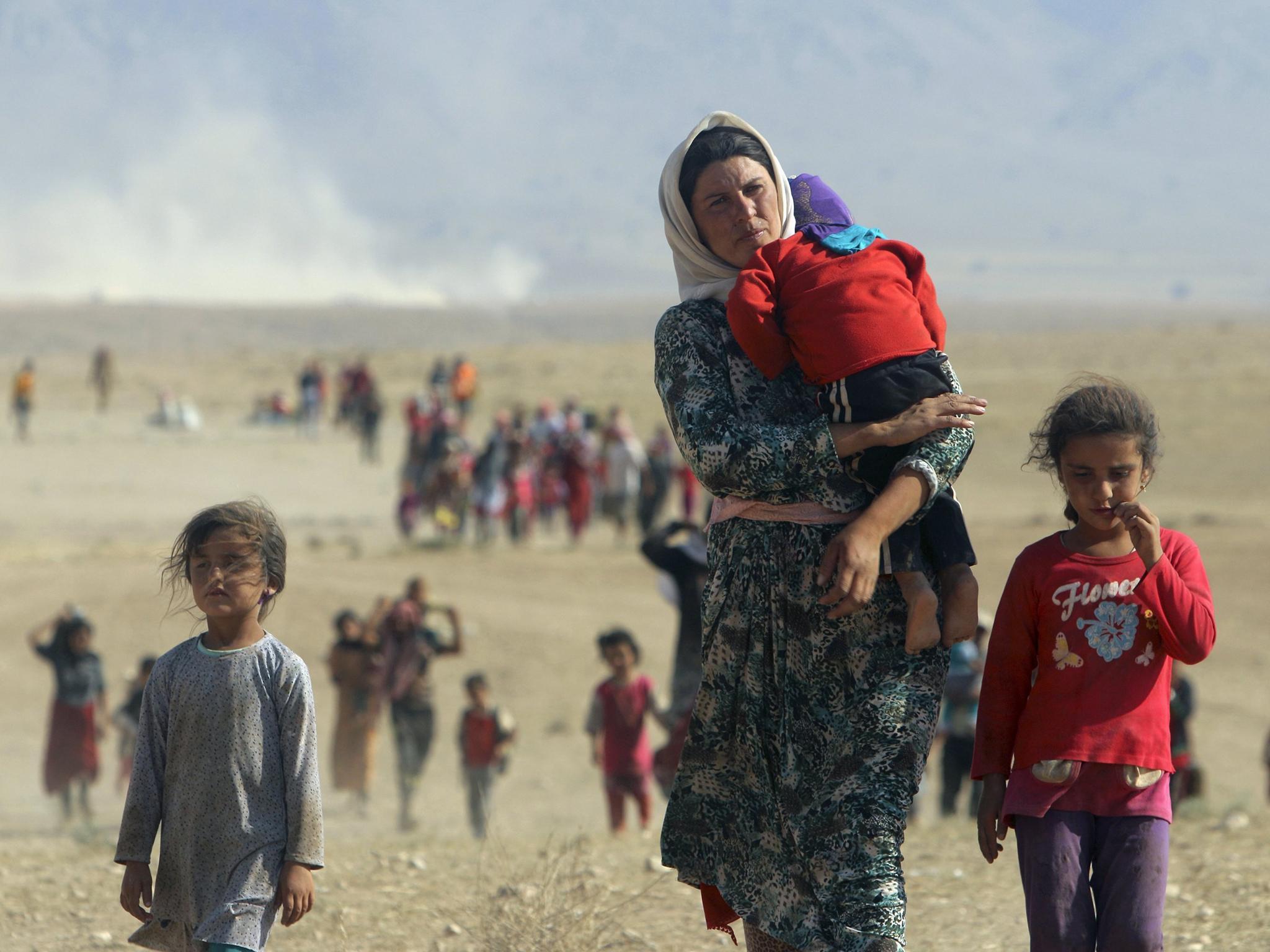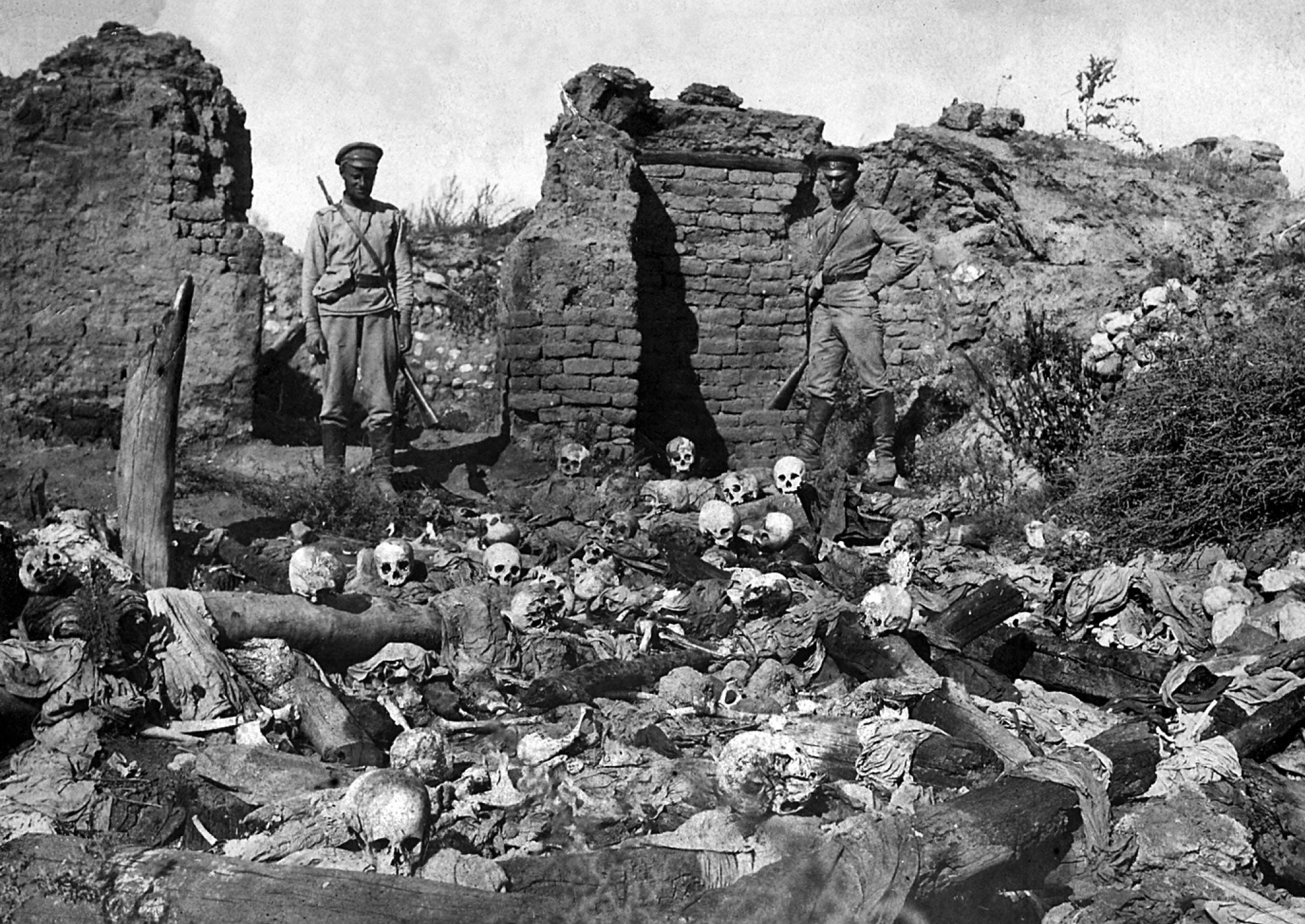The Christian tragedy in the Middle East did not begin with Isis
A hundred years on from the Armenian genocide, and a Christian minority is again suffering


One summer's day in 1990, I walked into a beautiful Crusader chapel in Keserwan, a gentle mountainside north of Beirut, where an old Catholic Maronite priest pointed to a Byzantine mosaic of – I think – Saint John. What he wanted to show me was the holy man's eyes. They had been stabbed out of the mosaic by a sword or lance at some point in antiquity. 'The Muslims did this,' the priest said.
His words had added clarity because at that time the Lebanese Christian army General Michel Aoun – who thought he was the president and still, today, dreams of this unlikely investiture – was fighting a hopeless war against Hafez Assad's Syrian army. Daily, I was visiting the homes of dead Christians, killed by Syrian shellfire. The Syrians, in the priest's narrative, were the same ‘Muslims’ who had stabbed out the eyes in the ancient picture.
I remember at the time – and often since – I would say to myself that this was nonsense, that you cannot graft ancient history onto the present. (The Maronites, by the way, had supported the earlier Crusaders. The Orthodox of the time stood with the Muslims.) Christian-Muslim enmity on this scale was a tale to frighten schoolchildren.
And yet only last year, as shells burst above the Syrian town of Yabroud, I walked into the country’s oldest church and found paintings of the saints. All had had their eyes gouged out and been torn into strips. I took one of those strips home to Beirut, the painted eyes of the saints staring at me even as I write this article. This was not the sacrilege of antiquity. It was done by ghoulish men, probably from Iraq, only months ago.
Like 9/11 – long after Hollywood had regularly demonised Muslims as barbarian killers who wish to destroy America – it seems that our worst fears turn into reality. The priest in 1990 cannot have lived long enough to know how the new barbarians would strike at the saints in Yabroud.
How one Yazidi girl fled the clutches of Isis
Isis warns of the 'end of Christian presence' in Middle East
Coptic Christians in Egypt beheaded by militants
Note how I have not mentioned the enslavement of Christian women in Iraq, the Islamic State’s massacre of Christians and Yazidis, the burning of Mosul's ancient churches or the destruction of the great Armenian church of Deir el-Zour that commemorated the genocide of its people in 1915. Nor the kidnapping of Nigerian schoolgirls. Not even the very latest massacre in Kenya where the numbers of Christian dead and the cruelty of their sectarian killers is, indeed, of epic, Hollywood proportions. Nor have I mentioned the ferocious Sunni-Shia wars that now dwarf the tragedy of the Christians.

But the Christian tragedy in the Middle East today needs to be re-thought – as it will be, of course, when Armenians around the world commemorate the 100th anniversary of the genocide of their people by Ottoman Turkey. Perhaps it is time that we acknowledge not only this act of genocide but come to regard it not as just the murder of a minority within the Ottoman Empire, but specifically a Christian minority, killed because they were Armenian but also because they were Christian (many of whom, unfortunately, rather liked the Orthodox, anti-Ottoman Tsar).
And this is true. The West – that amorphous, dangerous expression – has still not understood the use of this technology – especially the use which the cult makes of the internet – nor have the Muslim Arab imams who should be speaking about the fearful acts of Islamic State.
But most are not, any more than they denounced the 1980-88 Iran-Iraq war, when around a million Muslims killed each other. Because they were on Saddam’s side in that war. And because the Islamic State’s ideology is too obviously of Wahabi inspiration, and thus too close to some of the Gulf Arab states.
The crimes of Islamic State are as brutal as any committed by the German army in the Second World War, but Jews who converted were not spared Hitler’s plan for their extermination. What the Islamic State and the 1915 Ottoman Turks have in common is a cruelty based on ideology – even theology – rather than race hatred, although that is not far away. After the burning of churches and of synagogues, the rubble looks much the same.
The tragedy of the Arab world is now on such a literally Biblical scale that we are all demeaned by it. Yet I also think of Lebanon where the old priest showed me his mosaic with the missing eyes and where the Lebanese Christians and Muslims fought each other – with the help of many foreign nations, including Israel, Syria and America – and killed 150,000 of their own people.
Yet today, Lebanese Muslims and Christians, though still politically deeply divided, are protecting each other amid the gale-force winds around them. Why? Because they are today a much more educated population. It’s because they value education, reading and books and knowledge. And from education comes justice. Which is why, when compared to Lebanon, the Islamic State is a nation of lost souls.
Bookmark popover
Removed from bookmarks